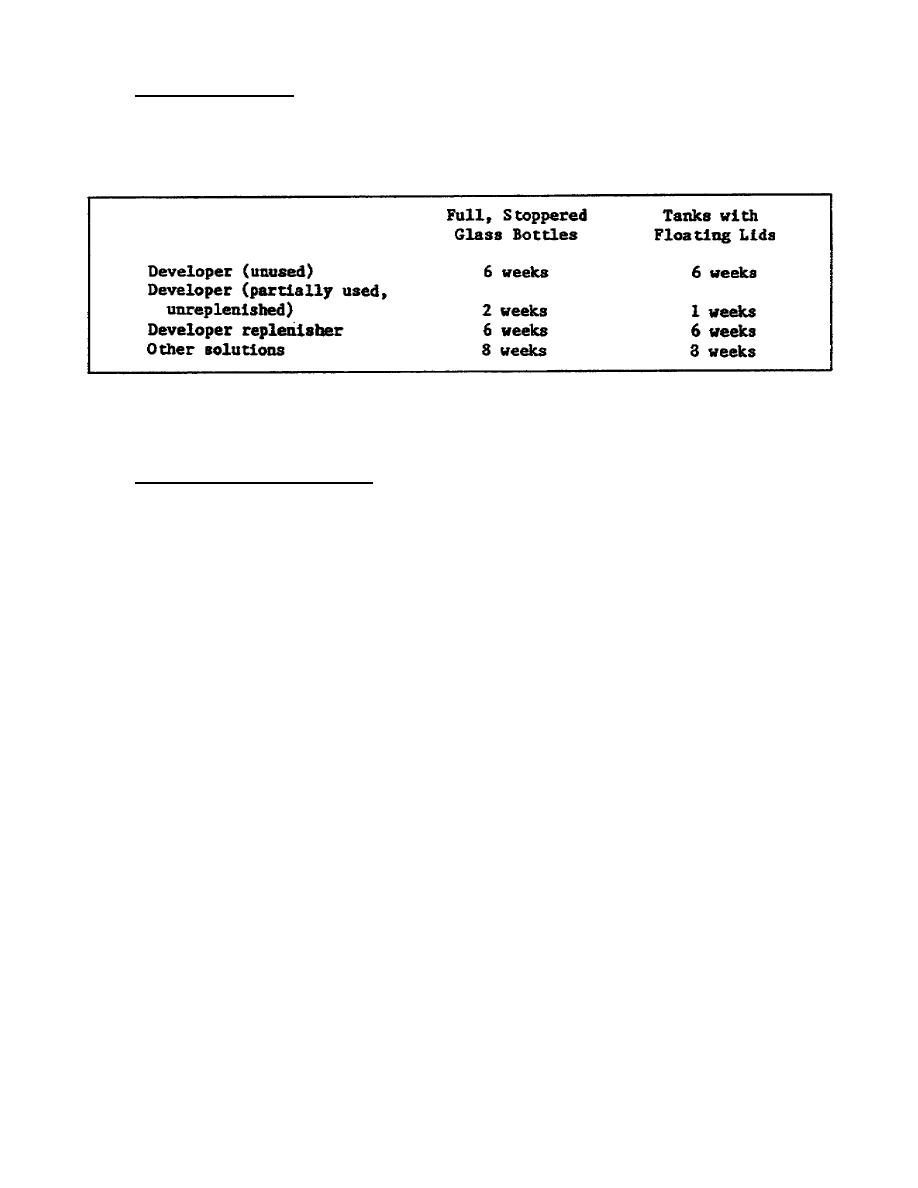
10.
Store the solutions at room temperature, usually between 60 degrees F to 80
degrees F to get the best results from your solutions. Do not use solutions
that have been stored longer than the times listed in figure 3-3.
Figure 3-3.
Storage life
PART C - TROUBLESHOOTING FOR THE EP 2 PROCESS
11.
Control Strip Monitoring.
Process monitoring saves chemistry, paper, and man-hours.
It also alerts
the technician to process changes so that corrective action may be taken
before any paper is adversely affected.
a. Kodak Form Y-55 (Process Monitoring).
Kodak Form Y-55 (Process
Monitoring) is prepared to provide a visual graph that details the activity
of the various chemistries.
Kodak provides a preprocessed control strip
whose density values are listed as "aims."
Test control strips are
processed in your chemistry and their densities are compared to the "aim"
densities.
The differences between the two are then plotted on the Y-55
Form.
(1) Reading plotting results. If plots are within the control limit
lines, the process is operating satisfactorily. If they are not, the plots
serve as clues to processing variables, either mechanical or chemical, that
may be adversely affecting photographic results. Diagnostic charts are used
for troubleshooting.
Corrective action is determined before further
processing resumes.
(2) Movement toward control limits.
At times, plots may be within
control limits, but steadily progressing in a direction that will eventually
go beyond control limits. In these instances, corrective action is taken to
prevent an out-of-control process.
3-14
SS0514



 Previous Page
Previous Page
